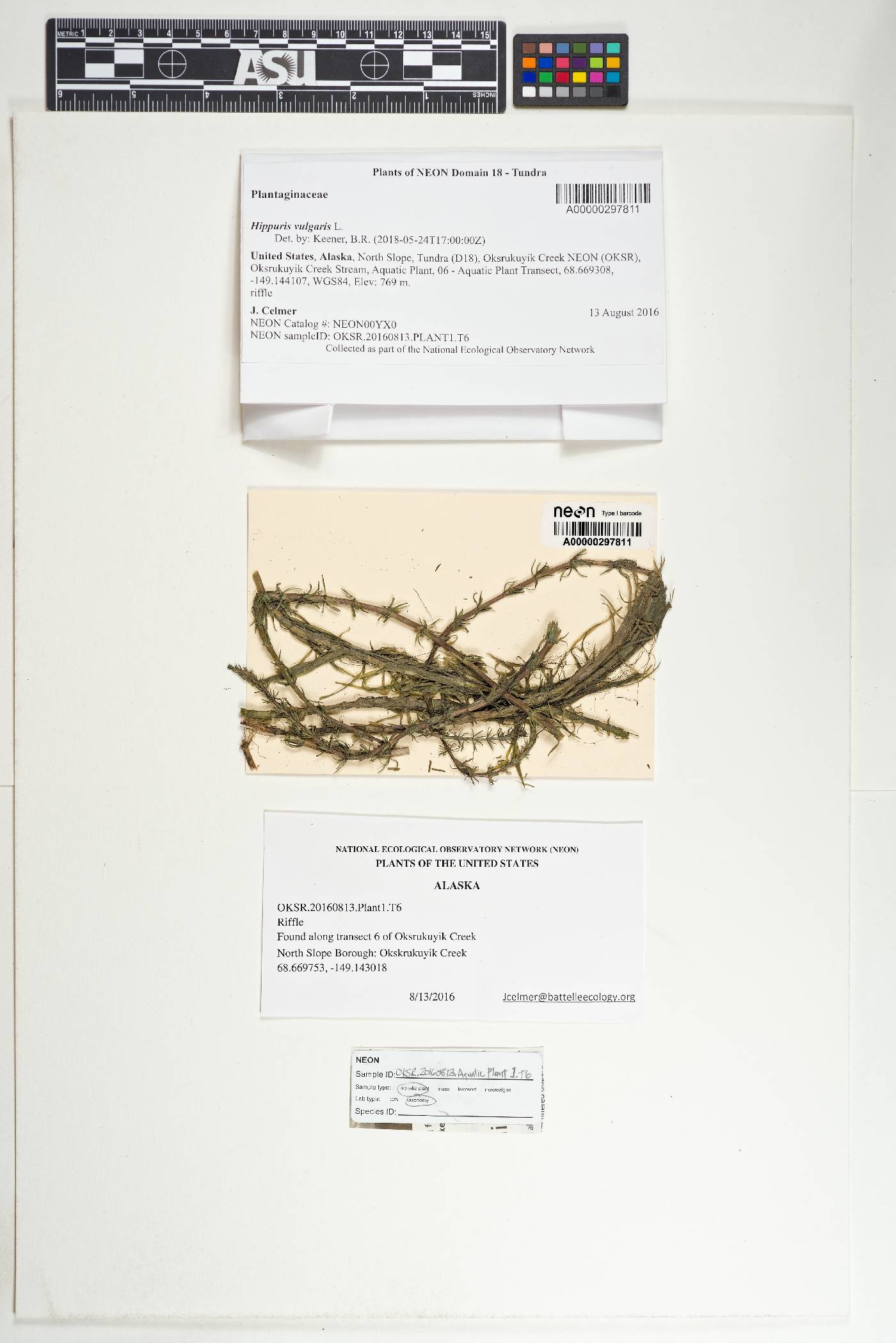- Home
- Search
- Images
- Datasets
- Sample Use
- How to Cite
- Additional Information
- About NEON
- NEON Data Portal
- ASU Biocollections
- About Symbiota
|
Family: Plantaginaceae |
PLANTS: Perennial herbs, emergent-aquatic or amphibious, of brackish and fresh water, generally glabrous. STEMS: unbranched, the submerged stems lax, the emergent stems erect, arising from creeping rhizomes. LEAVES: whorled in sets of (4-)6-12(-16), simple, estipulate; margins entire; submersed leaves slender, thin and flaccid, often soon degenerating; aerial leaves thicker and firmer, numerous and rather crowded, linear-attenuate. FLOWERS: solitary in upper leafaxils, inconspicuous, sessile or the lower on short pedicels; perfect or rarely imperfect, occasionally polygamous; calyx reduced to an inconspicuous, 2-4-lobed or subentire rim around the top of the ovary; petals none; stamen 1, with a short, slender filament and a large 2-celled sagittate anther; pistil simple, the ovary inferior, unicarpellate; style terminal, elongate, slender, generally lying in the groove between the two anther sacs. FRUIT: a small, smooth achene. NOTES: (Greek: hippos = horse + oura = tail, for the growth form above water). REFERENCES: Ricketson, Jon. 1995 Hippuridaceae. J. Ariz. - Nev. Acad. Sci. 29(l): 25. Characters of the family. Gleason, Henry A. & Cronquist, Arthur J. 1991. Manual of vascular plants of northeastern United States and adjacent Canada. lxxv + 910 pp. ©The New York Botanical Garden. All rights reserved. Used by permission. |


